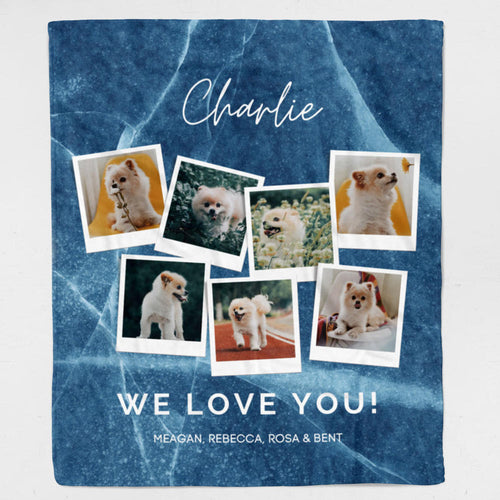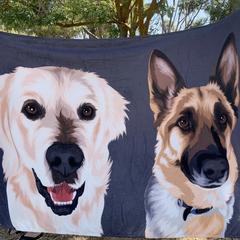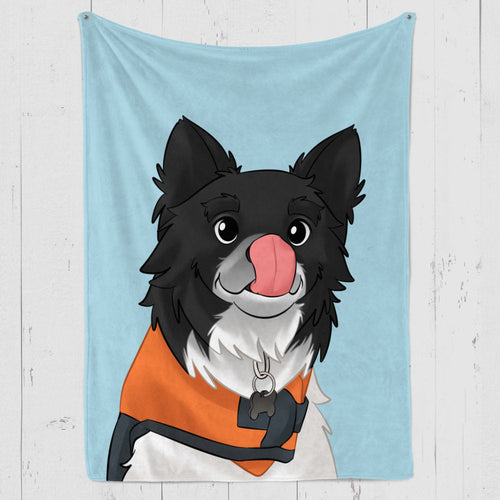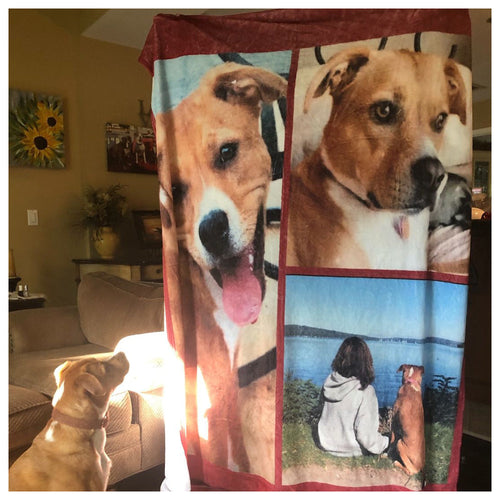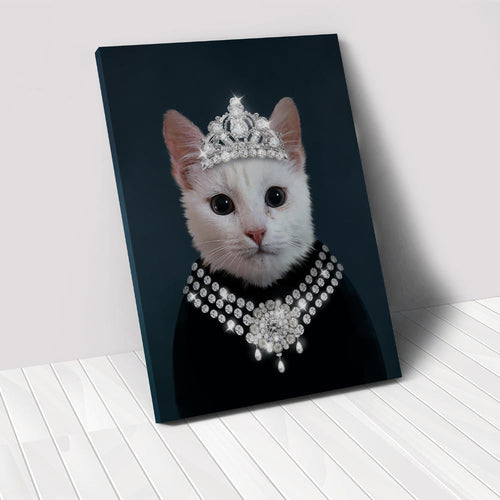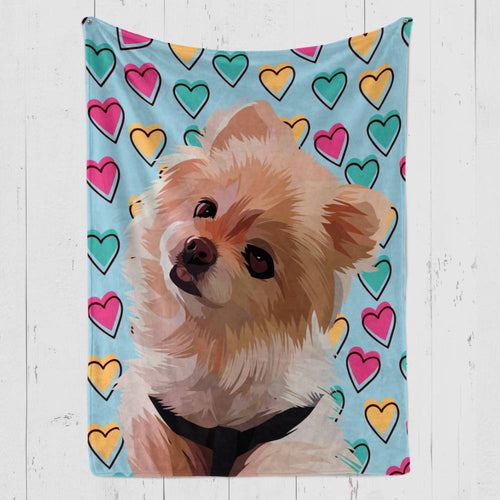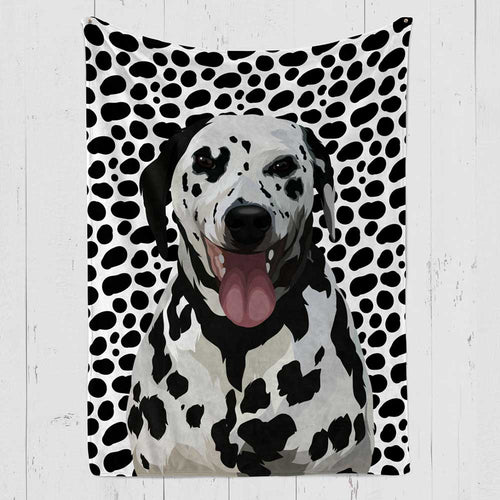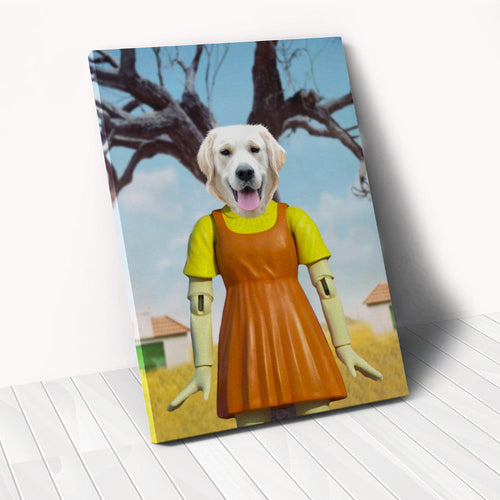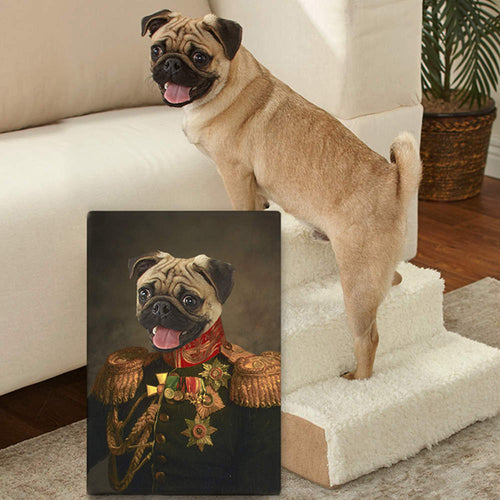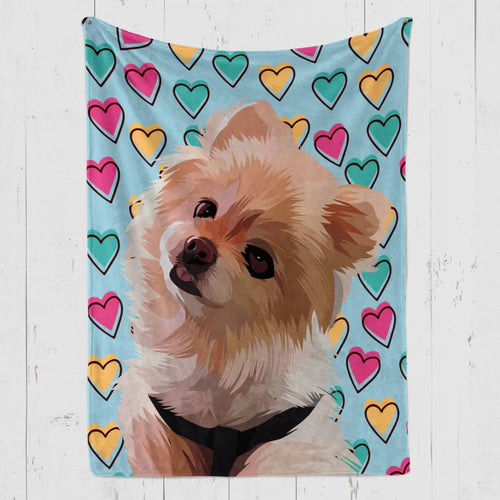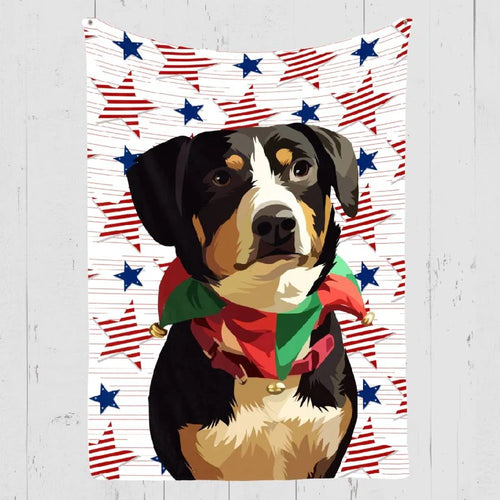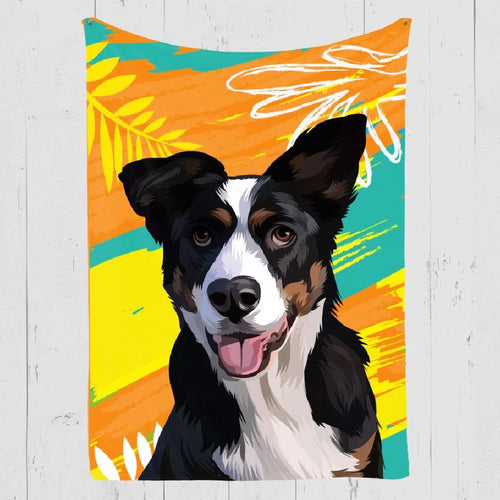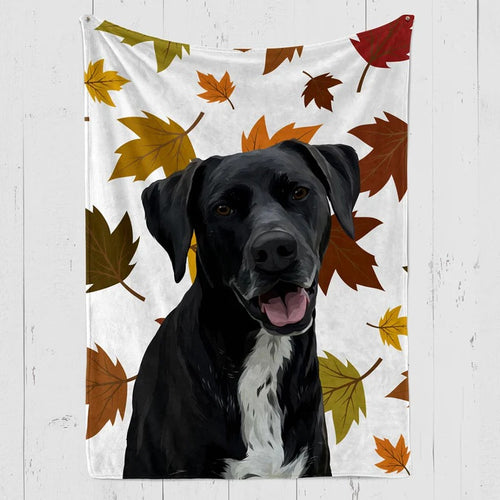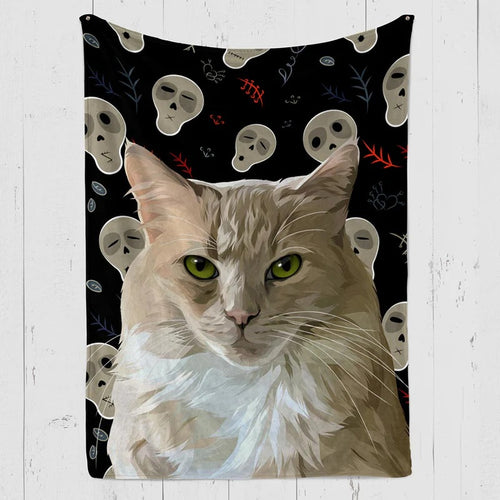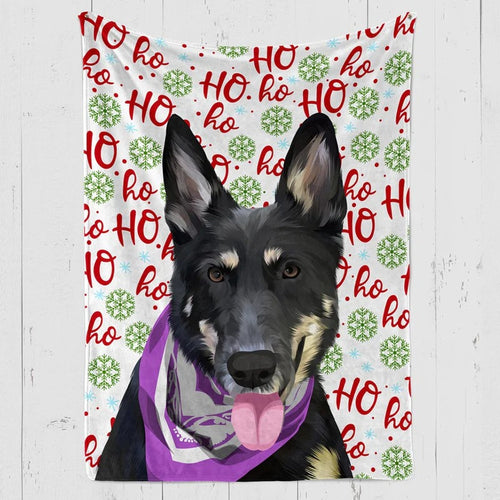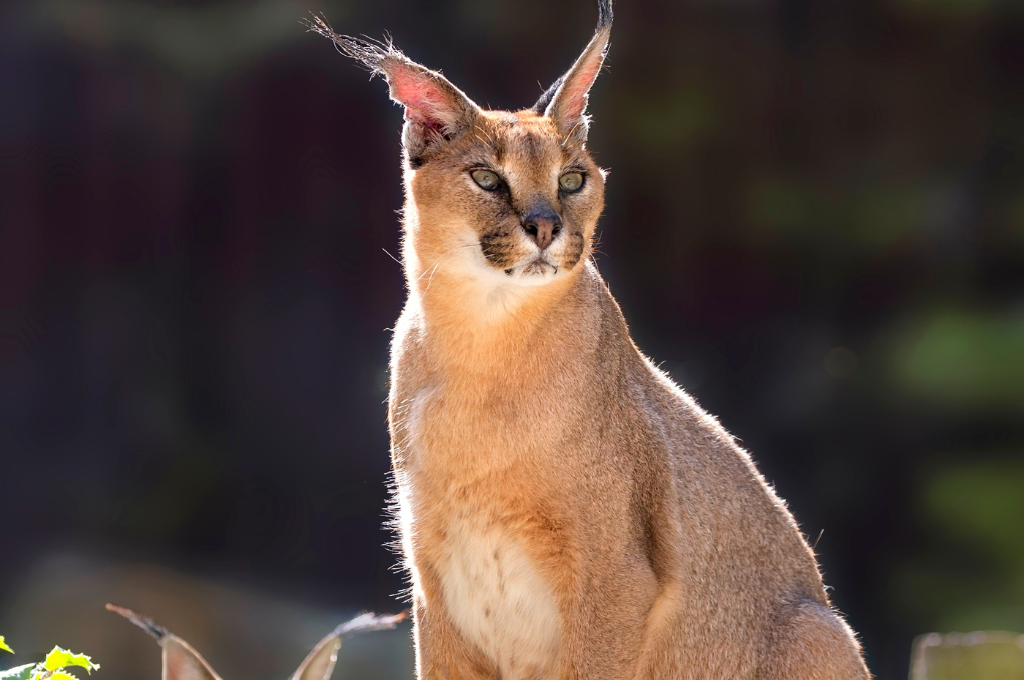
While you need to contact your vet if you notice changes in the color of your dog’s nose, some breeds are born with pink noses. This is as healthy as a black or a brown nose. Just like humans, dogs also have variations in their genes which manifests as unconventional features.
The pink noses in dogs are due to less production or no production of melanin. Sometimes it can be pink throughout or can change due to various reasons such as weather, age, disease, or any kind of allergies.
What Are Pink-Nosed Dog Breeds?
The following section lists 10 popular dog breeds with pink noses.
1. Australian Shepherd

Australian Shepherds have an amazing quality to warm up to strangers which makes them a perfect choice for companionship. They are generally medium sized and are perfectly suited for herding and farming. May people are fond of this dog because of its marvelous coat color.
Australian Shepherds can have a wide variety of nose colors which includes pink and liver-colored nose as well. Sometimes it may also have butterfly nose which is a mix of black and pink spots on the nose.
- Group: Herding Group
- Height: Male: 20 to 23 inches; Female: 18 to 21 inches
- Weight: 40 to 60 pounds
- Energy Level: Extremely high energy level
- Physical Characteristics: Lush, medium-length coat with a generous mane around the neck.
- Lifespan: 13 to 15 years
- Color: Merle, Red Merle, Black, Blue Merle, Red Tricolor, Black Tricolor
- Shedding: Shed all year round with two heavy shedding seasons in the spring and fall.
- Bark: Generally quiet but barks when threatened.
2. White Boxer

White boxers are ferocious breeds and you really would not want to mess with them. They have a large bite and hold the capacity to hold down big preys. They get very suspicious when spot a stranger but are extremely loyal and loving to their owners.
Boxers are born with pink noses which generally changes color as they age. They generally have less pigmentation when compared to other breeds ans hence some may retain the pink color of the nose till a very long time.
- Group: Working group
- Height: Males: 22.5 to 25 inches; Females: 21 to 23.5 inches
- Weight: Males: 65 to 80 pounds; Females: 50 to 65 pounds
- Energy Level: Highly Active
- Physical Characteristics: Square heads with an undershot jaw and muzzle blunt
- Lifespan: 10 to 12 years
- Color: Fawn or Brindle with excessive white markings.
- Shedding: Low-shedding breed
- Bark: Low affinity for barking
3.Poodle

Poodles are widely famous for their grace and intelligence. Owing to their friendly nature, they learn very fast and can be domesticated very easily. People suffering from hypersensitivity to dog fur can easily adopt a possle as it has primarily hypoallergenic fur.
Generally, poodles are mostly found with black noses. However, they may be born with pink noses or may develop it as they age. With age, the nose gradually changes its color from black to a lighter shade of brown or pink.
- Group: Non-sporting Group
- Height: 10 to 15 inches
- Weight: 50 to 70 pounds
- Energy Level: Hyperactive breed
- Physical Characteristics: A straight back with a square outline and a long elegant neck
- Lifespan: 12 to 15 years
- Color: Black, White, Apricot, Cream, Blue
- Shedding: Low-shedding breed
- Bark: Moderate Barkers
4. Harlequin Great Dane

Harlequin Great Dane is known to be one of the big dogs that are found in different colors. Even though their appearance might be scary, they are extremely loving and loyal to their respective owners. Owing to its good nature, harlequin great danes learn obedience faster than other breeds.
Harlequin Great Danes are born with pink noses and live with them. However, their noses take a black color or a lighter pink shade as they grow with age. Sometimes, these types of noses are referred to as “Butterfly Noses”.
- Group: Working Group
- Height: Males up to 32 inches; Females up to 30 inches
- Weight: 110 to 175 pounds
- Energy Level: Low-energy level
- Physical Characteristics: Rare combination of genetics who have a pure white coat with patches of black, gray, blue, or sable.
- Lifespan: 8 to 10 years
- Color: Has white fur white big black patches
- Shedding: Moderate shedders
- Bark: Does not bark without reason
5. Labrador Retriever

Labrador retriever is basically a cross breed between the Golden Retriever and the Labrodor. As both the species are extremely friendly and loving, Labrador Retriever is a very loving and compassionate companion. The coat colors include black, yellow, white black and brown.
Labradors are born with pink noses due to their genes but with age their noses turn black or brown. However, in Dudley Labradors, the melanin production is much less and they retain the pink color of the nose throughout their lifetime. Their noses require special attention during summer to prevent sunburn.
- Group: Sporting Group
- Height: Males: 22.5 to 24.5 inches; Females: 21.5 to 23.5 inches
- Weight: Males: 65 to 80 pounds; Females: 55 to 70 pounds
- Energy Level: Extremely energetic
- Physical Characteristics: Short double coat with very big and large expressive eyes and a broad head
- Lifespan: 10 to 12 years
- Color: Black, Yellow, Chocolate
- Shedding: Heavy shedders with heavy shedding during spring and fall
- Bark: Doesn’t bark much
6. Siberian Husky

Siberian Huskies are immensely loyal and loving to their owners but can be very stubborn at times. Therefore, people owning dogs for the first time may face difficulty in training them. They were mainly used to pull sled as they are highly energetic and enjoy working. The fact that it has double-layer coat implies that huskies are built for cold weather.
Generally the huskies are born with black noses but the noses can turn pink due to the cold weather. After the onset of winter, their noses turn different colors, including pink as well and this is called snow nose.
- Group: Working Group
- Height: Males: 21 to 23.5 inches; Females: 20 to 22 inches
- Weight: Males: 45 to 60 pounds; Females: 35 to 50 pounds
- Energy Level: Highly energetic
- Physical Characteristics: Medium-sized dog with erect ears and a straight neck
- Lifespan: 12 to 15 years
- Color: White, Black, Sable and White, Black and Tan
- Shedding: Shed twice a year
- Bark: Barking is not a common behavior in them
7. Dalmatian

Dalmatians fall under big dogs with identifiable black or liver spots. They were mainly bred to accompany a coach and is known to be firefighter’s best friend. Dalmatians are highly athletic and affectionate. Owing to their stamina and endurance, many people like to own them as household pets.
Naturally, they have black or brown noses. However, the nose color may change due to the cold weather or age. Sometimes, they have pink noses due to their genetical factors.
- Group: Non-Sporting Group
- Height: 19 to 24 inches
- Weight: 45 to 70 pounds
- Energy Level: Highly Active
- Physical Characteristics: Medium-sized dog, muscular body, and a short coat
- Lifespan: 11 to 13 years
- Color: Liver and White, Black and White
- Shedding: Moderate shedders
- Bark: Dalmatians don’t bark much
8. English Springer Spaniel

This dog breed loves to take part in outdoor activities and is very affectionate towards human beings. This makes an English Springer Spaniel an amazing pet dog. Apart from this, the dog is highly active and trainable and loves to take part in trekking as well.
Due to its genetic variation, the whole body of an English Springer Spaniel can be covered with liver spots which consequently results in a pink nose. Also, lack of melani at the time of birth and aging also contribute to developing pink noses.
- Group: Sporting Group
- Height: 19 to 20 inches
- Weight: 40 to 50 pounds
- Energy Level: Highly Active
- Physical Characteristics: Long-hanging ears, moderate muzzle, and large expressive eyes
- Lifespan: 12 to 14 years
- Color: Liver and White, Black and White, Tri-colors
- Shedding: Moderate Shedders
- Bark: Bark excessively under certain circumstances
9. Nova Scotia Duck Tolling Retriever

Although not a common breed, the Nova Scotia Duck Tolling Retriever makes a great friend. The main qualities of this breed are energy, intelligence, and hunting instincts. Nova Scotia Duck Tolling retriever is mainly bred to retrieve birds such as waterfowl and help find out where the birds are.
Nova Scotia Duck Tolling Retriever are predominantly born with a black but sometimes they can also be born with a pink nose. Having a pink nose is completely normal and healthy and indicates no disease unless the change in color occurs all of a sudden.
- Group: Sporting Group
- Height: 17 to 21 inches
- Weight: 30 to 50 pounds
- Energy Level: Highly active
- Physical Characteristics:
- Lifespan: 10 to 14 years
- Color: Red Golden, Red, Copper
- Shedding: Heavy Shedders
- Bark: Barks when there is a danger
10. Bull Terriers

Bull Terriers have a recognizable egg-shaped head and a stout body. They are large dogs and are extremely mischievous and should not be owned by families having other dogs or pets. When kept alone in a family, they remain very loyal to the family and provide years of companionship.
Bull terriers have white noses at the time of their birth which gradually changes changes color. The color change may turn it completely pink or keep it a mix of pink and black. The change starts within a few weeks. Bull Terriers are a classic example of “Dudley Nose” where dogs start losing pigments.
- Group: Terrier Group
- Height: Up to 22 inches
- Weight: Up to 60 pounds
- Energy Level: Highly Energetic
- Physical characteristics: Egg-shaped head with small, triangular eyes and pointed ears
- Lifespan: 10 to 14 years
- Color: White, White and Brindle, Fawn and White, Tri-color
- Shedding: Moderate to low shedders
- Bark: Reactive barker
Conclusion
Generally, the nose color in dogs is determined by genes. Some dogs have black noses while some have pink and this is due to the distribution of melanin on the nose. Melanin is primarily responsible for protection from the sun and therefore dogs having pink noses require special attention and proper application of dog-safe sunblock preparation to safeguard themselves.
Frequently Asked Questions:
Do dogs with pink noses need extra precautions against the sun?
Indeed, dogs with pink or lightly pigmented noses should receive special attention because they are more susceptible to sunburn.
Is a pink nose in a dog indicative of illness or a health issue?
While rare, pink noses can sometimes hint at autoimmune diseases like lupus.
Can dogs with pink noses still possess a keen sense of smell?
Dogs sporting pink noses maintain their regular sense of smell, and their noses function properly.
Is it a cause for concern if my dog's pink nose undergoes sudden color changes or displays anomalies?
Occasionally, during winter, a dog's nose may naturally change color to pink. However, abrupt shifts in nose color may indicate underlying health issues such as lupus. When uncertain, it's advisable to promptly consult your veterinarian.
Similar Articles
Latest Review on Woof Blankets
To have such a masterpiece by my side every day is a gift for me and my memories with Rex. Thank you WoofBlankets for such an opportunity to recreate his image on a blanket.Lara o’ Miguel US, California

COLLECTION WORTH EVERY PENNY
BEST SELLERS
-
4th of July Custom Pet Blanket
![4th of July Custom Pet Blanket Online]()
- NEW
- -39%
BlanketsSHOP NOW- Regular price
- from $69.95
- Sale price
- from $69.95
- Regular price
-
$114.95 - Unit price
- per
Sold out -
Woofy Single Color Custom Pet Blanket
![Woofy Single Custom Pet Blanket – Woof Blanket]()
- -41%
BlanketsSHOP NOW- Regular price
- from $64.95
- Sale price
- from $64.95
- Regular price
-
$109.95 - Unit price
- per
Sold out -
Summer Time Custom Pet Blanket
![Summer Time Custom Pet Blanket]()
- -39%
BlanketsSHOP NOW- Regular price
- from $69.95
- Sale price
- from $69.95
- Regular price
-
$114.95 - Unit price
- per
Sold out -
The Admiral - Custom Pet Portrait
![The Admiral - Custom Pet Portrait Online]()
- NEW
- -25%
CanvasSHOP NOW- Regular price
- from $59.95
- Sale price
- from $59.95
- Regular price
-
$79.95 - Unit price
- per
Sold out -
Wings of Loyalty - Custom Pet Portrait
![]()
- NEW
CanvasSHOP NOW- Regular price
- from $59.95
- Sale price
- from $59.95
- Regular price
-
- Unit price
- per
Sold out -
Celestial Paws - Custom Pet Portrait
![]() CanvasSHOP NOW
CanvasSHOP NOW- Regular price
- from $59.95
- Sale price
- from $59.95
- Regular price
-
- Unit price
- per
Sold out -
Woof Splash Custom Pet Blanket
![Woof Splash Custom Pet Blanket]()
- -39%
BlanketsSHOP NOW- Regular price
- from $69.95
- Sale price
- from $69.95
- Regular price
-
$114.95 - Unit price
- per
Sold out -
The Loyal Soul - Custom Pet Portrait
![]()
- NEW
SHOP NOW- Regular price
- from $59.95
- Sale price
- from $59.95
- Regular price
-
- Unit price
- per
Sold out -
Modern Pet Portraits
![Cute Dog Modern Pet Portraits Online]()
- NEW
- -36%
CanvasSHOP NOW- Regular price
- from $59.95
- Sale price
- from $59.95
- Regular price
-
$93.95 - Unit price
- per
Sold out -
Cartoonized Pet Portraits (New)
![Cartoonized Pet Custom Portraits Online]()
- -36%
SHOP NOW- Regular price
- from $59.95
- Sale price
- from $59.95
- Regular price
-
$93.95 - Unit price
- per
Sold out -
Pet Memorial Custom Photo Collage Blanket
![Personalized pet memorial quilt with photos]()
- -41%
BlanketsSHOP NOW- Regular price
- from $64.95
- Sale price
- from $64.95
- Regular price
-
$109.95 - Unit price
- per
Sold out -
The French Sailor - Custom Pet Portrait
![]()
- -25%
CanvasSHOP NOW- Regular price
- from $59.95
- Sale price
- from $59.95
- Regular price
-
$79.95 - Unit price
- per
Sold out -
The Policeman - Custom Pet Portrait
![]()
- NEW
- -25%
CanvasSHOP NOW- Regular price
- from $59.95
- Sale price
- from $59.95
- Regular price
-
$79.95 - Unit price
- per
Sold out -
The General - Custom Pet Portrait
![]()
- NEW
- -25%
CanvasSHOP NOW- Regular price
- from $59.95
- Sale price
- from $59.95
- Regular price
-
$79.95 - Unit price
- per
Sold out -
Woof Love Custom Pet Blanket
![Woof Love Custom Pet Blanket]()
- -39%
BlanketsSHOP NOW- Regular price
- from $69.95
- Sale price
- from $69.95
- Regular price
-
$114.95 - Unit price
- per
Sold out -
The Ambassador - Custom Pet Portrait
![The Ambassador - Custom Pet Portrait Online]()
- NEW
- -25%
CanvasSHOP NOW- Regular price
- from $59.95
- Sale price
- from $59.95
- Regular price
-
$79.95 - Unit price
- per
Sold out -
Fall In Love Custom Pet Blanket
![Fall In Love Custom Dog Blanket]()
- NEW
- -39%
BlanketsSHOP NOW- Regular price
- from $69.95
- Sale price
- from $69.95
- Regular price
-
$114.95 - Unit price
- per
Sold out -
The Classy Lady - Custom Pet Portrait
![The Classy Lady]()
- NEW
- -25%
CanvasSHOP NOW- Regular price
- from $59.95
- Sale price
- from $59.95
- Regular price
-
$79.95 - Unit price
- per
Sold out -
The Duke - Custom Pet Portrait
![The Duke - Custom Pet Portrait]()
- NEW
- -25%
CanvasSHOP NOW- Regular price
- from $59.95
- Sale price
- from $59.95
- Regular price
-
$79.95 - Unit price
- per
Sold out -
Dog In Suit- Custom Pet Portrait
![Dash Dog In Suit- Custom Pet Portrait Online]()
- NEW
- -25%
CanvasSHOP NOW- Regular price
- from $59.95
- Sale price
- from $59.95
- Regular price
-
$79.95 - Unit price
- per
Sold out -
The Princess - Custom Pet Portrait
![]()
- NEW
- -25%
CanvasSHOP NOW- Regular price
- from $59.95
- Sale price
- from $59.95
- Regular price
-
$79.95 - Unit price
- per
Sold out -
Modern Pet Portrait with One Mug
![Modern Pet Portrait with One Mug]()
- -25%
Print MaterialSHOP NOW- Regular price
- from $99.95
- Sale price
- from $99.95
- Regular price
-
$133.95 - Unit price
- per
Sold out -
The Aristocrat - Custom Pet Portrait
![The Aristocrat - Custom Pet Portrait At Best Price]()
- NEW
- -25%
CanvasSHOP NOW- Regular price
- from $59.95
- Sale price
- from $59.95
- Regular price
-
$79.95 - Unit price
- per
Sold out -
Single Color Custom Blanket with 1 Mug
![Single Color Custom Blanket with 1 Mug]() BlanketsSHOP NOW
BlanketsSHOP NOW- Regular price
- from $99.95
- Sale price
- from $99.95
- Regular price
-
- Unit price
- per
Sold out -
Single Color Custom Blanket with 2 Pillows
![Single Color Custom Pet Blanket with 2 Pillows]()
- -21%
BlanketsSHOP NOW- Regular price
- from $99.95
- Sale price
- from $99.95
- Regular price
-
$125.95 - Unit price
- per
Sold out -
The Dog in Suit Custom Pet Mug
![]()
- -20%
MugsSHOP NOW- Regular price
- $39.95
- Sale price
- $39.95
- Regular price
-
$49.95 - Unit price
- per
Sold out -
Angel Custom Pet Mug
![]()
- -20%
MugsSHOP NOW- Regular price
- $39.95
- Sale price
- $39.95
- Regular price
-
$49.95 - Unit price
- per
Sold out -
This Human Belongs To - Custom Pet Mug
![]()
- NEW
- -20%
MugsSHOP NOW- Regular price
- $39.95
- Sale price
- $39.95
- Regular price
-
$49.95 - Unit price
- per
Sold out -
It's Not Dog Hair Custom Pet Mug
![]()
- NEW
- -20%
MugsSHOP NOW- Regular price
- $39.95
- Sale price
- $39.95
- Regular price
-
$49.95 - Unit price
- per
Sold out -
My Dog Is My Valentine Custom Pet Mug
![]()
- NEW
- -20%
MugsSHOP NOW- Regular price
- $39.95
- Sale price
- $39.95
- Regular price
-
$49.95 - Unit price
- per
Sold out -
3 Photos With Message Custom Pet Mug
![]()
- NEW
- -20%
MugsSHOP NOW- Regular price
- $39.95
- Sale price
- $39.95
- Regular price
-
$49.95 - Unit price
- per
Sold out -
My Valentine Has Four Legs- Personalized Mugs
![]()
- NEW
- -20%
MugsSHOP NOW- Regular price
- $39.95
- Sale price
- $39.95
- Regular price
-
$49.95 - Unit price
- per
Sold out -
Dog Mamma Custom Pet Coffee Mug
![]()
- -20%
MugsSHOP NOW- Regular price
- $39.95
- Sale price
- $39.95
- Regular price
-
$49.95 - Unit price
- per
Sold out -
Uncle Sam - Custom Pet Portrait
![]()
- NEW
- -25%
CanvasSHOP NOW- Regular price
- from $59.95
- Sale price
- from $59.95
- Regular price
-
$79.95 - Unit price
- per
Sold out -
The Revolutionary Emperor - Custom Pet Portrait
![]()
- NEW
- -25%
CanvasSHOP NOW- Regular price
- from $59.95
- Sale price
- from $59.95
- Regular price
-
$79.95 - Unit price
- per
Sold out -
The Princess Paws - Custom Pet Portrait
![]()
- -25%
CanvasSHOP NOW- Regular price
- from $59.95
- Sale price
- from $59.95
- Regular price
-
$79.95 - Unit price
- per
Sold out -
Exclusive Custom Pet Blanket
![Exclusive Custom Pet Blanket]()
- -39%
BlanketsSHOP NOW- Regular price
- from $69.95
- Sale price
- from $69.95
- Regular price
-
$114.95 - Unit price
- per
Sold out -
The Dark Crusader Knight - Custom Pet Portrait
![]()
- -25%
CanvasSHOP NOW- Regular price
- from $59.95
- Sale price
- from $59.95
- Regular price
-
$79.95 - Unit price
- per
Sold out
